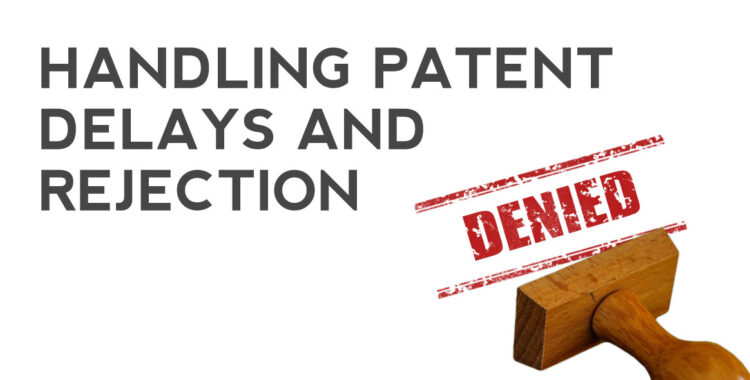Handling Patent Delays and Patent Rejection
I am patent pending. Why is this process taking so long, and should I be concerned?
The short answer is that we are dealing with an extremely busy government agency, and delays are normal. The USPTO has added patent examiners continually, and the good news is that patent pendency times have decreased over the last few years. However, the inventor needs to remember that there are ultimately only one of two outcomes in this process:
- the patent issues
- the patent application goes into abandonment
The patent remains patent pending until one of these two events occurs. The inventor needs to use this patent pending time to monetize their invention by either obtaining licenses or making and selling the invention themselves.
The timeframe of pendency can vary widely, but you can expect the first response to take anywhere from 12-24 months, though there are outliers where our firm has received first responses in as little as three months and some which take more than 36 months. When we receive the response, called an office action, we have three months to respond. We also accept the inventor’s input on the Examiner’s objections/rejections of the patent application claims during this time.
You can expect to receive a rejection in the first office action as the Examiner is essentially pushing the attorney to prove why something should be patentable. In addition, there are other mechanisms at play behind the scene at the USPTO that incentivizes the Examiners to reject the application during that first response. Still, ultimately the goal is to ensure that you are only awarded that you are legally entitled to. Once we reply to the office action, the Examiner may issue an allowance or another office action. This process of going back and forth typically takes between 8 and 16 months.
A Note From Attorney Sean Kaufhold:

I cannot express strongly enough the benefits of using the patent pending time to get your invention out into the marketplace. Any sales that you achieve during this time can be used to:
- attract investors
- keep your competition in check while you scale up
- prove to the USPTO that your invention is worthy of a patent
If you sell thousands of units, the marketplace believes it is an innovative product, so why shouldn’t the USPTO? I have had a patent Examiner overruled on appeal for failure to take sales into consideration.
Intellectual Property Playbook
An Entrepreneur's Guide To Patents, Trademarks, and Copyrights GET THE PLAYBOOK
The Examiner has rejected my application for a patent. Now what?
A final rejection or advisory action – essentially office actions where the Examiner is rebutting all arguments for patentability – is not necessarily the end of the case. The applicant can continue to fight for the patent through appeals and reconsiderations of the USPTO. However, because the patent examination process from its beginning until a final rejection typically takes between 24 and 36 months, you will often know whether or not the invention has been successful. Therefore, you will also know if it makes financial sense to continue the fight. You will also have a good idea of what the USPTO is going to throw at you and therefore are more
informed as to your chances of success going forward.
Suppose the invention is experiencing some success, but the inventor is battling the USPTO. In that case, it is possible to keep the application in a pending status for many years to assist the inventor in keeping the competition wary of copying. It is also important to know that should the invention be a financial success. Such evidence can be used to support an argument for patentability. Therefore, inventors are again highly encouraged to use the patent pending status time to move their invention aggressively into the marketplace.
A Note From Attorney Sean Kaufhold:
 Receiving a final rejection is never the end of the world, and applications are often overturned by filing an appeal or requesting that the Examiner reconsider their position based on some amendments to the application.
Receiving a final rejection is never the end of the world, and applications are often overturned by filing an appeal or requesting that the Examiner reconsider their position based on some amendments to the application.






